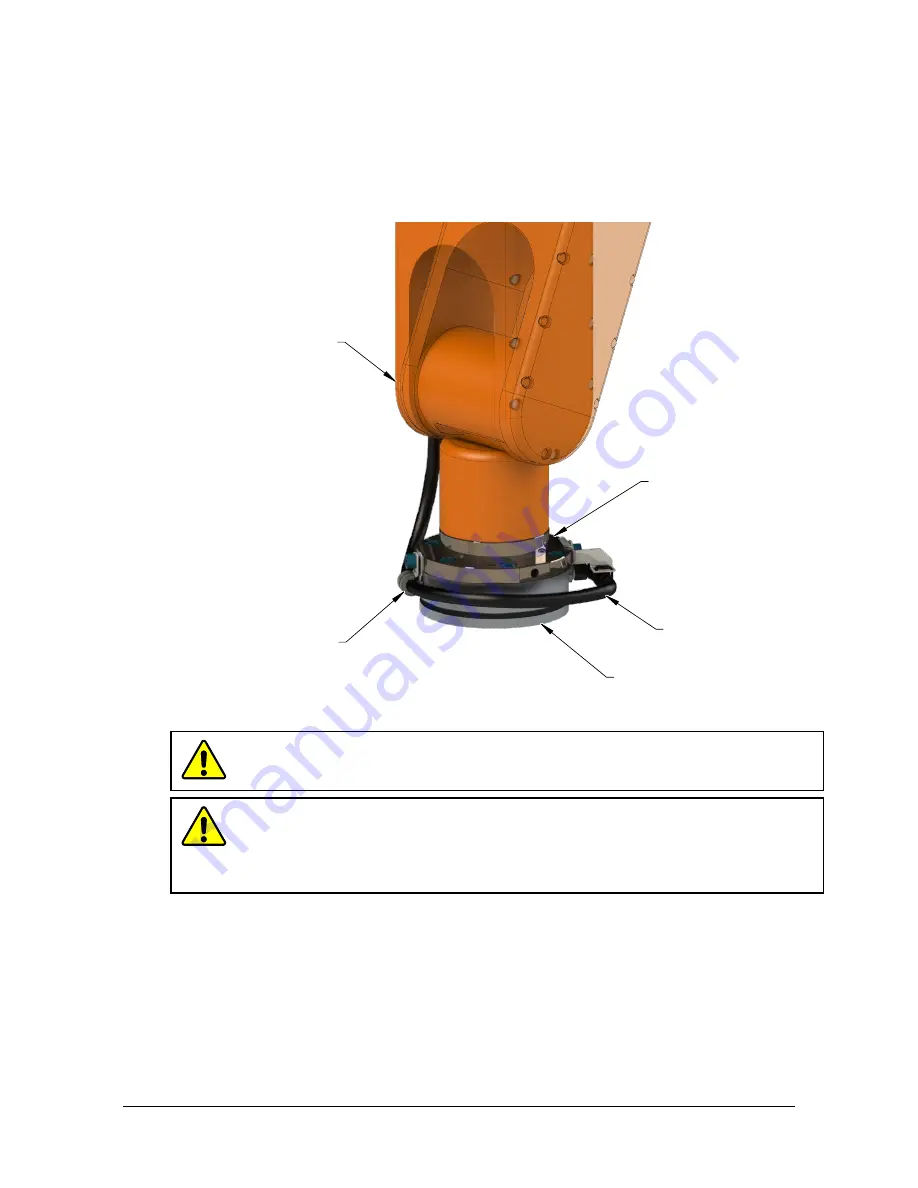
Manual, F/T Sensor, Axia80
Document #9620-05-B-Axia80-02
Pinnacle Park • 1031 Goodworth Drive • Apex, NC 27539 • Tel:+1 919.772.0115 • Fax:+1 919.772.8259 •
B-13
3.2 Routing the Cable
The routing and bending radius of the cable depends upon the customer application. Unlike motionless
applications, where the cable is in a static condition, dynamic applications subject the cable to a repetitive
motion. For dynamic applications, restrain the cable at a distance that does not expose and damage the
sensor’s cable connection from the robot’s repetitive motion.
Figure 3.2—Routing of the Sensor Cable
Mounting
Interface Plate
Sensor Cable
F/T Sensor
Restrain cable to keep
repetitive motion from
affecting the cable
connection.
Robot Arm
CAUTION:
Subjecting the connector to the repetitive motion will cause damage to the
connector. Restrain the cable close to the connector so that the repetitive motion of the
robot does not interfere with the cable connector.
CAUTION:
Improper cable routing may cause injury to personnel, poor functionality
of critical electrical lines, or damage to the equipment. The electrical line, especially
where attached to the sensor’s connector, must be routed to avoid stress failure, sharp
bends, or a disconnection from the equipment. Damage to the sensor or cable from
improper routing will void the warranty.
















































